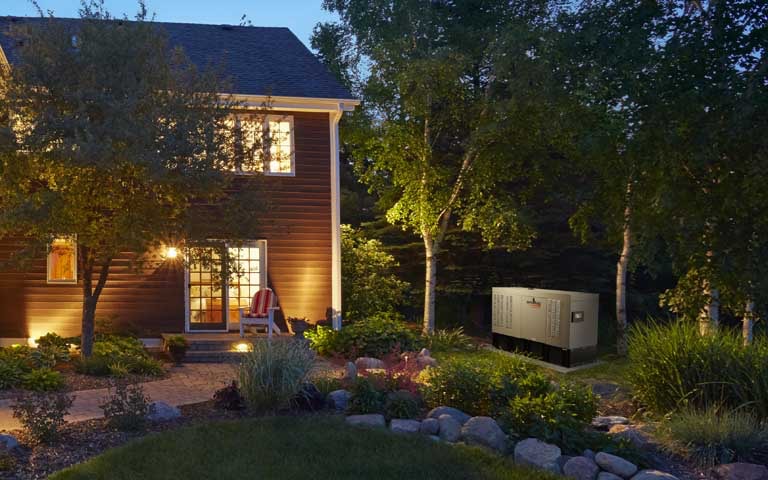
When installing a backup generator for home energy security, assess your electrical needs and pick a suitable generator type based on wattage and fuel requirements. Ensure proper placement, ventilation, and compliance with local codes. Prepare to connect essential circuits, install a transfer switch, and hire a certified electrician for a safe setup. Conduct regular maintenance checks, oil changes, and tests to prolong your generator’s life. Prioritize continuous power supply and safeguard your household against outages with these crucial steps. Understanding these details is vital for securing uninterrupted energy for your home.
Benefits of Installing a Backup Generator
Wondering why installing a backup generator is crucial for your home’s energy security and peace of mind? A backup generator serves as a reliable source of power during unexpected outages, ensuring that essential appliances like refrigerators, lights, and heating systems continue to function. By seamlessly switching on when the main power supply fails, a backup generator guarantees uninterrupted electricity, protecting your home from discomfort and potential damages.
Moreover, with a backup generator in place, you can rest assured that your security systems, such as alarms and cameras, remain operational even during power disruptions. This added layer of protection enhances the safety of your household and belongings. Additionally, for individuals requiring medical equipment powered by electricity, a backup generator is indispensable, providing a lifeline during emergencies.
Types of Backup Generators Available
To explore the available options for backup generators, understanding the various types and their functionalities is key to making an informed decision for your home’s energy security. Backup generators come in three main types: portable generators, standby generators, and inverter generators. Portable generators are versatile and can be moved around; they are suitable for powering essential appliances during short outages. Standby generators are permanently installed outside the home and are connected to the electrical system, automatically turning on when there is a power outage. They can power the entire house for an extended period. Inverter generators are more fuel-efficient and produce clean energy suitable for sensitive electronics. They are portable and quieter than traditional generators. When selecting a backup generator, consider factors like fuel type (gasoline, propane, diesel), wattage capacity, runtime, and noise level to ensure it meets your specific needs for uninterrupted power supply during emergencies.
Factors to Consider Before Installation
Before proceeding with the installation of a backup generator, carefully evaluate your home’s electrical needs and power priorities to determine the appropriate generator size and type. Start by calculating the total wattage of essential appliances and systems you wish to power during an outage. Consider factors like refrigerators, freezers, medical equipment, heating or cooling systems, lights, and communication devices. Determine if you need a standby generator that automatically turns on when the power goes out or a portable generator that requires manual activation.
Assess the fuel options available for generators, such as propane, natural gas, diesel, or gasoline, considering factors like availability, cost, and storage requirements. Evaluate the noise level produced by different generator models to ensure compliance with local noise regulations. Additionally, check local building codes and homeowner association guidelines to confirm installation requirements. Lastly, think about the generator’s placement, ensuring proper ventilation and safe distances from windows, doors, and combustible materials. By carefully considering these factors, you can select a backup generator that best suits your home’s energy security needs.
Steps to Install a Backup Generator
Assessing your home’s electrical setup and power requirements is the initial step in the process of installing a backup generator. Begin by determining the essential circuits you want to power during an outage. Next, select a suitable location for the generator keeping in mind clearance requirements and proximity to the electrical panel. Ensure the chosen spot is well-ventilated and meets local building codes.
After deciding on the generator size based on your power needs, install a transfer switch to connect the generator to your home’s electrical system safely. The transfer switch prevents backfeeding, ensuring the generator only powers your house, not the grid. Hire a qualified electrician to make the necessary electrical connections and set up the transfer switch correctly.
Following the electrical work, place the generator on a stable, level surface and connect it to the transfer switch. Perform a test run to verify that everything functions as intended. Finally, familiarize yourself with the generator’s operation and maintenance procedures to ensure optimal performance during power outages.
Maintenance Tips for Longevity
For optimal longevity of your backup generator, regular maintenance is crucial to ensure its continued reliability and performance. Here are some essential maintenance tips to help you keep your backup generator running smoothly.
Firstly, it is important to schedule regular inspections by a qualified technician to check for any issues and ensure all components are functioning correctly. This includes inspecting the fuel system, oil levels, filters, spark plugs, and overall system performance.
Secondly, regular oil changes are vital to keep your generator operating efficiently. Make sure to follow the manufacturer’s recommendations on oil type and change intervals.
Additionally, keep the generator and its surroundings clean and free from debris to prevent overheating and ensure proper ventilation.
Lastly, test your backup generator regularly to ensure it starts up quickly and operates smoothly during power outages. Following these maintenance tips will help extend the lifespan of your backup generator and provide you with reliable power backup when you need it most.







